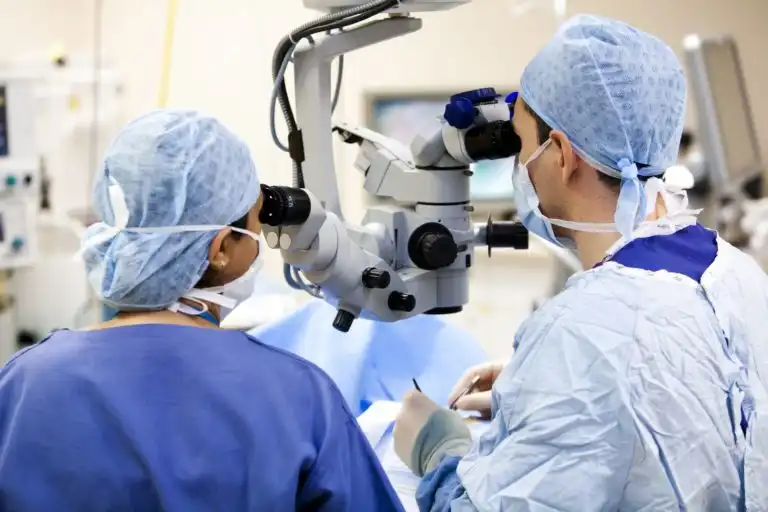- quicker return to good vision immediately after the procedure compared to other accepted methods, like PRK, LASIK, or EBK
- quicker healing of the corneal flap
- the corneal flap is much smoother

Trans-PRK stands for Trans-epithelial PhotoRefractive Keratectomy. Corneal epithelialization and dioptric correction is done in the first stage of the procedure, while the surgeon uses a high-precision excimer laser. PRK used to be the standard method of laser eye treatment, and LASIK replaced it because it involved less pain. However, the LASIK technique failed in patients whose corneas were too thin or irregular.
Patients need not fear this type of surgery. Of course, this is usually easier said than done – after all, it is a procedure directly on the eye. Trans-PRK, however, is a non-contact method.
It is perhaps impossible to imagine a better developed technology than the latest Trans-PRK, which has replaced the need to perform a classic operation, as in conventional PRK, where the surgeon had to remove the epithelium by hand. Since the excimer laser can do this much more accurately, pain is virtually non-existent. In addition, the epithelial healing process is much faster. As a rule, regeneration of the epithelium does not take more than three days.
Once the epithelium is removed, the actual correction begins – again, using a laser. By reshaping the upper layer of the cornea, the visual defect is eliminated. In order to protect the cornea, relieve pain and speed up the healing of the wound, doctors apply a special contact lens over it for the first few days. It allows the cornea to regenerate quickly and also protects it from external influences and stimuli.

The decisive factor to qualify for Trans-PRK smart surFace treatment is stability of the visual defect for at least twelve months prior to surgery. Healthy eyes are also an indispensable condition. Diseases such as cataracts or retinal conditions do not allow Trans-PRK treatment.
For Trans-PRK smart surFace treatment, a value of plus 3 diopters is the maximum value (if hyperopia is present) and minus 6 diopters (if myopia is present). Astigmatism can be treated with the Trans-PRK method up to a value of 3 diopters. Only the doctor decides which method is best for the patient. He is the one who knows the patient and, above all, knows the eye to be treated. Therefore, the choice of method is not always determined solely by the number of diopters.
Several more weeks are needed for the ability to see to recover. In a small number of cases, treated patients complain that the healing process is sometimes a bit painful, and some patients also experience a sense of corneal haze/scarring (haze effect). This usually causes a temporary deterioration of vision. Eye drops help in this case for a short time, but this haze is not permanent. It is essential that the patient always attend the follow-up appointment scheduled by the ophthalmologist after the procedure.